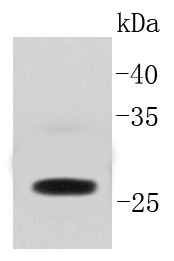The green fluorescent protein (GFP) was originally identified as a protein involved in the bioluminescence of the jellyfish Aequorea victoria. GFP cDNA produces a fluorescent product when expressed in prokaryotic cells, without the need for exogenous substrates or cofactors, making GFP a useful tool for monitoring gene expression and protein localization in vivo. Several GFP mutants have been developed, including EGFP, which fluoresce more intensely than the wildtype GFP and have shifted excitation maxima, making them useful for FACS and fluorescence microscopy as well as double-labeling applications. GFP is widely used in expression vectors as a fusion protein tag, allowing expression and monitoring of heterologous proteins fused to GFP.

